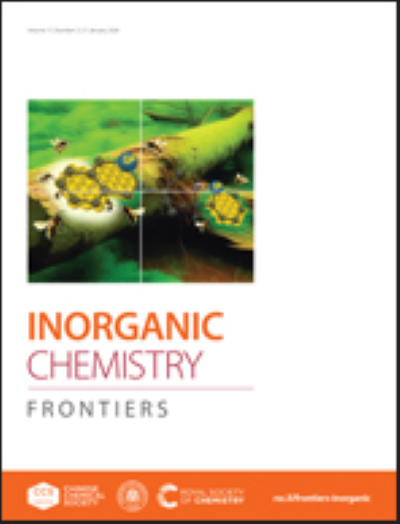立体效应对晶体对称性的调制:在分子铁电中实现铁弹性
IF 6.1
1区 化学
Q1 CHEMISTRY, INORGANIC & NUCLEAR
引用次数: 0
摘要
铁弹性材料作为主要铁性材料中的一个重要类别,为形状记忆、超弹性、可调电子学、微机电系统和致动器的发展铺平了道路。会津总结的铁氧体相变规则为材料设计提供了理论指导。然而,铁电和铁塑在某种程度上是相互交织的。要优化材料性能并开发出更好的理论模型,就必须将这些性质分离开来。通过修改[(CH3)4N][FeCl4](一种典型的非铁弹性分子铁电体),我们合成了(Me2EtNCH3CH2Cl)FeCl4(DMCE-FeCl4),这是一种有机-无机杂化化合物,在保持铁电性的同时引入了铁弹性。DFT 计算显示,有机阳离子的形状有助于产生铁弹性,而它们的偶极矩则有助于产生铁电性。这项研究加深了人们对铁电性及其独立控制的理解,对可重构存储器件和智能致动器具有重要意义。本文章由计算机程序翻译,如有差异,请以英文原文为准。
Steric Effect Induced Modulation on Crystallographic Symmetry: Implementing Ferroelasticity in Molecular Ferroelectric
Ferroelastic materials, as a significant category within the primary ferroic materials, have paved the way for the development of shape memory, superelasticity, tunable electronics, MEMS and actuators. The ferroic phase transition rules summarized by Aizu provides a theoretical guideline for material design. However, ferroelectrics and ferroelastics are to some extent intertwined with each other. Decoupling these properties is essential for optimizing material performance and developing better theoretical models. By modifying [(CH3)4N][FeCl4], a typical molecular ferroelectric that is not ferroelastic, we synthesized (Me2EtNCH3CH2Cl)FeCl4 (DMCE-FeCl4), an organic–inorganic hybrid compound that introduces ferroelasticity while maintaining ferroelectricity. DFT calculations reveal that the shape of the organic cations contributes to ferroelasticity, while their dipole moments contribute to ferroelectricity. This work advances the understanding of ferroic properties and their independent control, with implications for reconfigurable memory devices and intelligent actuators.
求助全文
通过发布文献求助,成功后即可免费获取论文全文。
去求助
来源期刊

Inorganic Chemistry Frontiers
CHEMISTRY, INORGANIC & NUCLEAR-
CiteScore
10.40
自引率
7.10%
发文量
587
审稿时长
1.2 months
期刊介绍:
The international, high quality journal for interdisciplinary research between inorganic chemistry and related subjects
 求助内容:
求助内容: 应助结果提醒方式:
应助结果提醒方式:


